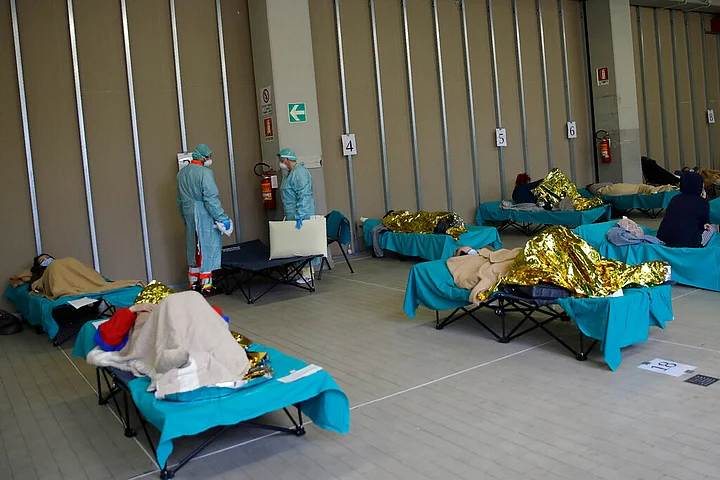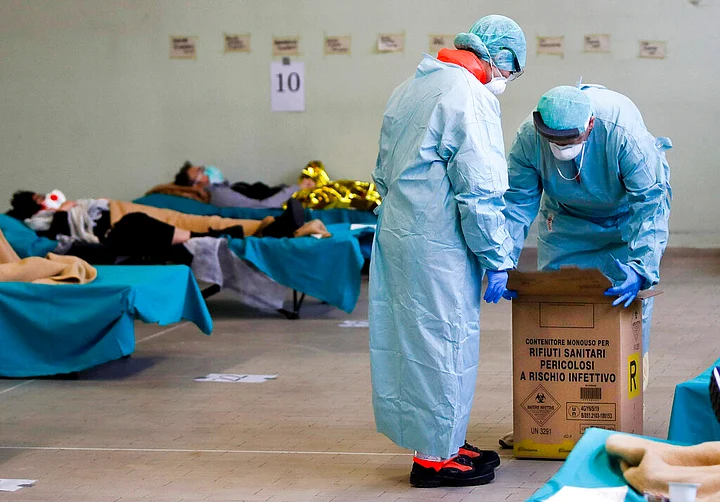As the world grapples with the COVID-19 pandemic, Italy has occupied a special place in the global discourse surrounding the outbreak — and the reasons are not all pleasant.
With over 12,000 cases and at least 1000 deaths, the European country has recorded the second highest number of cases in the world, after mainland China — where the outbreak first originated.
Prime Minister of Italy, Giuseppe Conte, has now announced that the country is to close all shops except food stores and pharmacies in the continent’s toughest lockdown yet.
The explanations for this seemingly astonishing scenario in Italy are multiple, and their implications manifold.
An Overwhelmed Healthcare System

The surge in cases has meant that healthcare workers and doctors are working tirelessly round the clock to treat the patients.
According to The Atlantic, the cases have long exceeded what the health infrastructure can provide for. Doctors, nurses and other healthcare workers are not getting enough time with each patient, and even beds, machines and ventilators are not available in sufficient numbers.
A nurse in Italy described her experience during the current outbreak ‘war-like’. She told The Guardian,
The Guardian article further mentions that an anaesthetist in an intensive care unit of a hospital told the newspaper Corriere della Sera that saving a life ‘is decided by age and health conditions, as in situations of war’ due to the mounting pressure on the healthcare infrastructure.
Carlo Rienzi, President of Italy’s leading consumer association Codacons said in a statement, “In no case can age be a discriminating factor when it comes to public health, and it certainly cannot be a criterion to decide who to treat and who not to treat. A shortage of beds must not lead to choices like those described by the doctor.”
However, to deal with extraordinary situations, the Italian College of Anesthesia, Analgesia, Resuscitation and Intensive Care (SIAARTI) published guidelines for medical practitioners to follow. It said that instead of providing intensive care to all patients who need it, there might a be need to follow “the most widely shared criteria regarding distributive justice and the appropriate allocation of limited health resources”.
On these lines, it suggested that priority should be given to patients with the ‘best chances of success’.
A New York Times article also stated that doctors were being forced to not treat the elderly, and in another town, patients with coronavirus-caused pneumonia were reportedly being sent home, a mayor informed. Naturally, the paramedics are being forced to take ‘tough’ calls in the situation of crisis.
Explaining the Numbers: Italy’s Demography

Italy’s death rate from COVID-19 is 5 percent, much higher than the world’s average of 3.4 percent (death rates are evolving as cases go up - we are reporting the current rate according to the World Health Organisation).
While the delay in imposing tough restrictions and lockdowns in the initial phases of the outbreak could be a major reason for the surge in cases, some other factors may also have a role to play in explaining such a high death rate. A primary one, could be Italy’s population demographic — in that almost 23 percent of its residents are 65 or older, reports The New York Times.
Older adults are known to be an at-risk population, and Italy’s high cases of death among people in their 80s and 90s corresponds to the world trend. Aubree Gordon, an associate professor of epidemiology at the University of Michigan, told Live Science that Italy’s older population would warrant a higher mortality rate than the average if all else was held equal.
Dr Sumit Ray, critical care specialist in Delhi NCR, summed it up in conversation with FIT,
The reasons notwithstanding, Italy’s experience is scary and serves as a lesson to the world. If timely measures are not undertaken to ‘flatten’ the curve through social distancing and constant monitoring, the world could well be moving on the same path. It's time for action, not debate.
(At The Quint, we are answerable only to our audience. Play an active role in shaping our journalism by becoming a member. Because the truth is worth it.)
